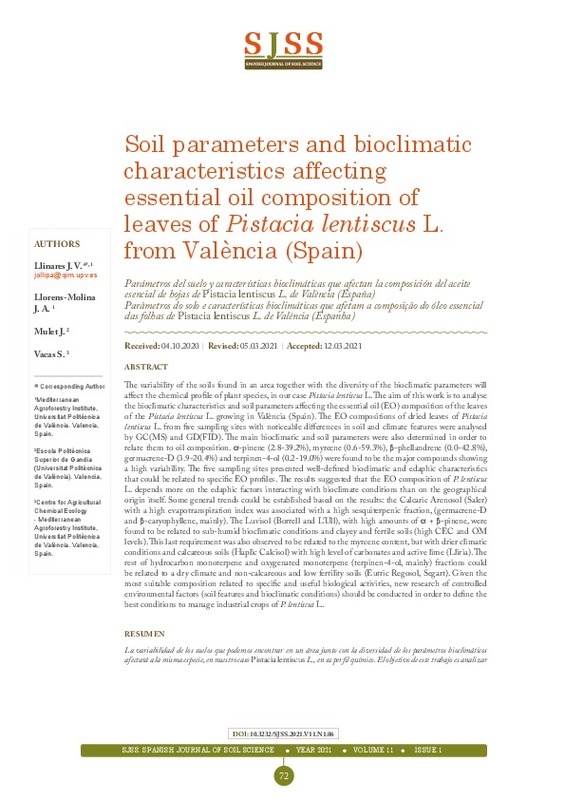JavaScript is disabled for your browser. Some features of this site may not work without it.
Buscar en RiuNet
Listar
Mi cuenta
Estadísticas
Ayuda RiuNet
Admin. UPV
Soil parameters and bioclimatic characteristics affecting essential oil composition of leaves of Pistacia lentiscus L. from València (Spain)
Mostrar el registro completo del ítem
Llinares Palacios, JV.; Llorens Molina, JA.; Mulet, J.; Vacas, S. (2021). Soil parameters and bioclimatic characteristics affecting essential oil composition of leaves of Pistacia lentiscus L. from València (Spain). Spanish Journal of Soil Science. 11(1):72-87. https://doi.org/10.3232/SJSS.2021.V11.N1.06
Por favor, use este identificador para citar o enlazar este ítem: http://hdl.handle.net/10251/177522
Ficheros en el ítem
Metadatos del ítem
| Título: | Soil parameters and bioclimatic characteristics affecting essential oil composition of leaves of Pistacia lentiscus L. from València (Spain) | |
| Autor: | Mulet, J. | |
| Entidad UPV: |
|
|
| Fecha difusión: |
|
|
| Resumen: |
[EN] The variability of the soils found in an area together with the diversity of the bioclimatic parameters will
affect the chemical profile of plant species, in our case Pistacia lentiscus L. The aim of this work is to ...[+]
|
|
| Palabras clave: |
|
|
| Derechos de uso: | Reconocimiento (by) | |
| Fuente: |
|
|
| DOI: |
|
|
| Editorial: |
|
|
| Versión del editor: | https://doi.org/10.3232/SJSS.2021.V11.N1.06 | |
| Tipo: |
|









